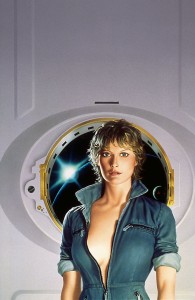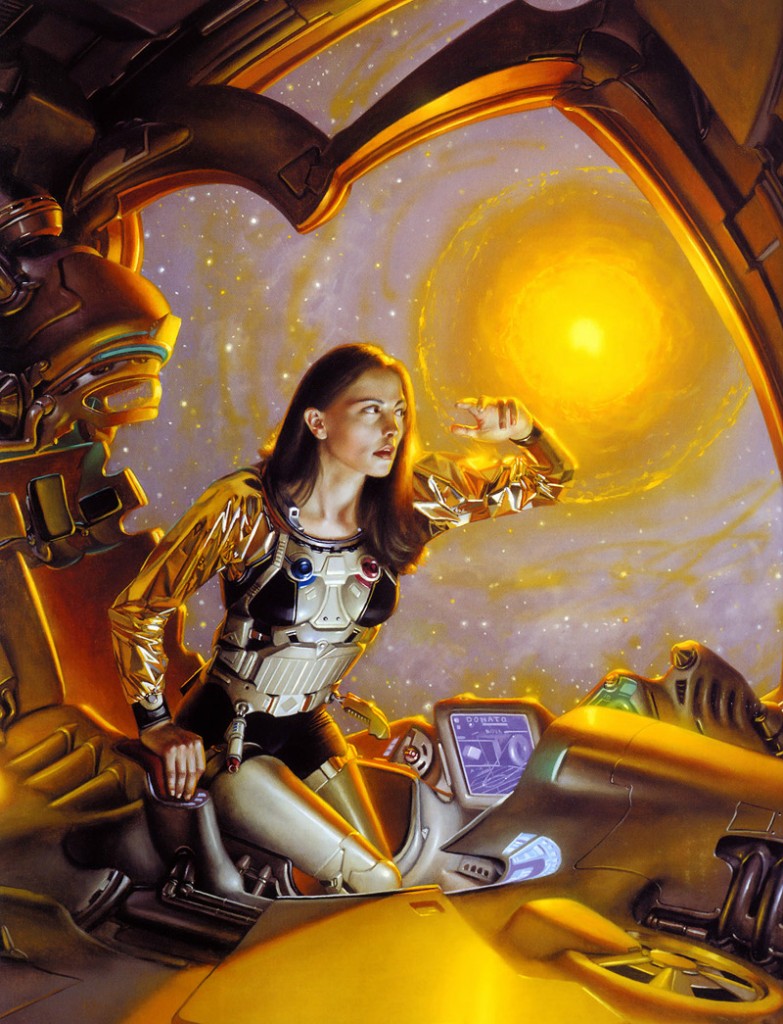“...all I ask is a tall ship and a star to steer her by…” says John Masefield in his poem Sea Fever. Well, if our tall ship is a space ship and we need a star to steer her by, then we’re gonna need a window.
Windows are important. When humans design and build pretty much anything a window is usually included. The urge to look out and see where we are, even if we are nowhere, is too strong an urge to resist. Even underground subway cars have windows. Think about that.
Spaceships are no exception. From the first illustrations of spaceships windows were almost always included. There was an unspoken romance about the idea of being able to look out and see with our own eyes the vast multitude of stars that we knew populated the furthest reaches of space. In reality the naked human eye does not have the capability to see much in the depths of space. The images from space that one sees from NASA are usually a combination of information from various spectrums that the human eye cannot see… X-rays, infrared, etcetera… rendered visually so that our eyes can appreciate it. Simply looking out the porthole of a deep space vessel will likely be disappointing to a space tourist.
 Still, we want windows. There’s a scene from the movie version of Tom Wolfe’s The Right Stuff where the engineers behind the Mercury program want to build the space capsule without a porthole. It would be easier from an engineering standpoint. The Mercury astronauts balk at the idea and threaten to walk out of the program which would threaten the funding. “No bucks, no Buck Rogers” says Fred Ward as Guss Grissom. Today’s spaceships have windows and the astronauts can lounge by the window of the International Space Station and look down at the Earth.
Still, we want windows. There’s a scene from the movie version of Tom Wolfe’s The Right Stuff where the engineers behind the Mercury program want to build the space capsule without a porthole. It would be easier from an engineering standpoint. The Mercury astronauts balk at the idea and threaten to walk out of the program which would threaten the funding. “No bucks, no Buck Rogers” says Fred Ward as Guss Grissom. Today’s spaceships have windows and the astronauts can lounge by the window of the International Space Station and look down at the Earth.
 Spaceships have to have windows and when it comes to science fiction illustration, the bigger the better. It is unrealistic to expect to see huge picture windows aboard a spaceship, but when you are illustrating a science fiction story set onboard a spaceship, well, the viewer has to be able to see what’s out that window in order to become part of the story that the image is telling.
Spaceships have to have windows and when it comes to science fiction illustration, the bigger the better. It is unrealistic to expect to see huge picture windows aboard a spaceship, but when you are illustrating a science fiction story set onboard a spaceship, well, the viewer has to be able to see what’s out that window in order to become part of the story that the image is telling.
Spaceship windows are often depicted as round or rounded as in this classic image from Michael Whelan. This was cover art for Robert Heinlein’s Friday and the window is as important a part of the composition as the figure or the planet. Look at Whelan’s cover art for Isaac Asimov’s Robots and Empire. A historic meeting happens on a spaceship right in front of a round window showing that it is, indeed, in space and orbiting a planet.
But not all windows are round. Some, like the windows depicted by artist Donato Giancola have a distinctly organic shape. It would be an engineering nightmare to design a spaceship with some of the windows that Giancola depicts but they effectively convey to the viewer the sense of awe and majesty that comes when travelling the Cosmos.
Naturally I love a trend like this and am not afraid to join in. I love compositions with spaceship windows. Here’s one I did recently titled Gear Crew. The window is as important a part of the composition as the figures in front or the planet beyond.














